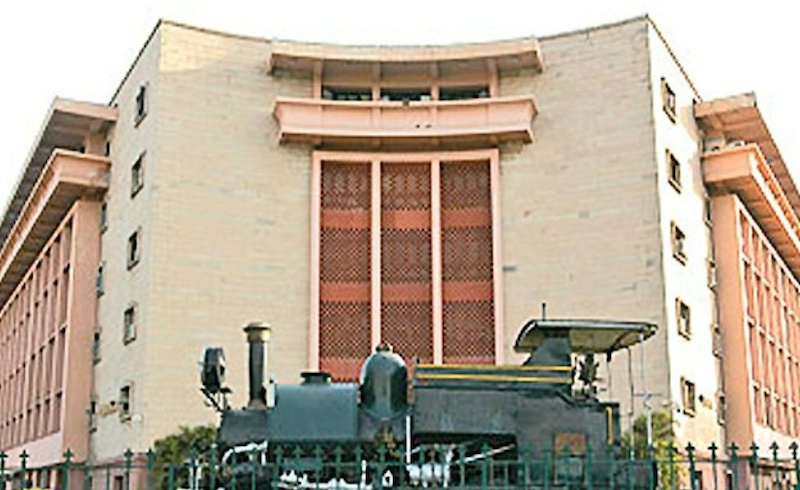Should Railway Board take up mega projects for the benefit of the few?
Alok Kumar Verma, IRSE (Retd.)
In my posts on Twitter (The links are given below), I explain why building highspeed and semi-high speed lines on Standard Gauge with public money is like government offering subsidy & tax breaks on Ferrari cars, Tiffany’s jewelry, Maharaja Express and private mansions!
In Kerala everybody experiences the frustration of slow speed on its roads as well as the rails. Kerala also has the second highest rate of fatalities in road accidents after Goa.
Though poverty in Kerala is among the lowest in the country, the general prosperity is only marginally better. Because of the adverse topography, and high incidence of floods, landslides and ground subsidence, the speed of trains and the road vehicles is among the lowest in the country.
The average speed on rail and roads in the other parts of the country is 20 to 40% higher.
For example, a non-stop journey by road from Thiruvananthapuram to Ernakulam can take 5 to 6 hrs to cover a distance of about 210 km, averaging 38 km/hr.
Compare this to journey of 4 hr to 4 hr and 30 mts to cover the longer distance of about 220 km from New Delhi to Ambala, averaging 52 km/hr (37% higher). So why build the proposed semi-highspeed line exclusively for the rich and upper middle class?
From my experience of coordinating and guiding the preparation of the Preliminary Feasibility Report of Mar’19 for this line by the Consultant’s team, my assessment is that the cost of construction can be reduced by 30 to 40% and ridership would increase by about 100 to 200% if the line is built on Broad Gauge.
With this will come the added benefit of release of almost 70% capacity of the existing line which can be used for providing services like local suburban type of trains, Ro-Ro service for transporting loaded trucks etc.
Undoubtedly, the in-principle approval for building this line on Standard Gauge is completly arbitrary. And, there seem to be at play considerations of taking loan from foreign banks and real estate development at the new stations, which will be in the suburbs in the outskirts of the main cities on the line, including promoting smart cities.
If for any reason Standard Gauge was to be adopted for this line in Kerala, the decision should have been taken after a detailed study of the merits and demerits of building the line on Standard Gauge vis-a-vis building it on Broad Gauge.
If this trend of building highspeed and semi-high speed lines on Standard Gauge with huge foreign debt to serve the rich and privileged top 3 to 5% of the country’s population continues, India could end up having two separate railway systems:
The standalone highspeed and non-highspeed lines – possibly dotted with smart cities for the wellheeled – and the vast broad gauge network with its slow and overcrowded passenger trains for the rest of the population.
Should Railway Board take up mega projects for the benefit of the few?
— Railways & Mobility Alok Kumar Verma, IRSE (Retd.) (@trains_are_best) September 7, 2021
In my posts in the links below I explain why building highspeed and semi-high speed lines on Standard Gauge with public money is like government offering subsidy & tax breaks on Ferrari cars, Tiffany's.. 1/4 https://t.co/G2x95wNyYL
STRANGE WAYS OF WORKING OF RAILWAY BOARD
STRANGE WAYS OF WORKING OF RAILWAY BOARD
— Railways & Mobility Alok Kumar Verma, IRSE (Retd.) (@trains_are_best) August 6, 2021
In 1993, Rly Board said it would raise speed on atleast two important routes, New Delhi – Kanpur & New Delhi – Bhopal to 160 kmph in 1995. That hasn't happened yet.
In 1997-2000, it imported then state of the art locomotives (ABB)…1/8 https://t.co/ozZUm1EbRA
Extreme unprofessionalism in the preparation of Feasibility Report for May’19 on which Railway Board gave in-principle approval (IPA) to the Kerala Semi-Highspeed railway line.
Extreme unprofessionalism in the preparation of Feasibility Report for the K-Rail Project:
— Railways & Mobility Alok Kumar Verma, IRSE (Retd.) (@trains_are_best) August 9, 2021
The news item in the link below says:
KRDCL "invites bids for architectural designs, hydrographic survey for SilverLine project"
So KRDCL is now acknowledging they did not CARRY out..1/9 https://t.co/dFMHNKsDc6
#K_RAIL FACT AND FICTION OF ESTIMATION OF COST AND RIDERSHIP
KERALA SILVERLINE PROJECT: THE FACT AND FICTION OF ESTIMATION OF TRAFFIC AND COST
— Railways & Mobility Alok Kumar Verma, IRSE (Retd.) (@trains_are_best) July 16, 2021
I will be speaking in a webinar on the above subject on Monday, 19.7.21.
It all began with Railway Board hastily giving in-principle approval to the project on the basis of a paper alignment… pic.twitter.com/zqYkWiG2ho
#No_to_StadardGuage_on_IR #RailwayBoard #BulletTrains #Alignment #Survey #FeasibilityStudy #ClimateChange #AirPollution


